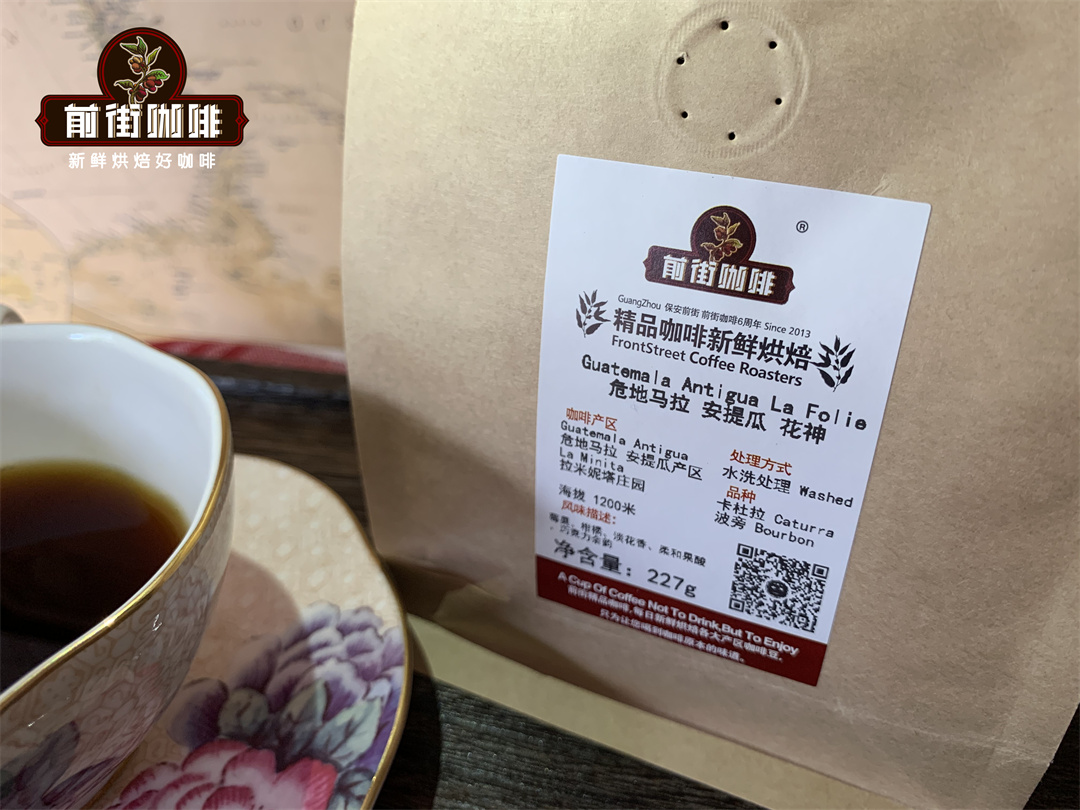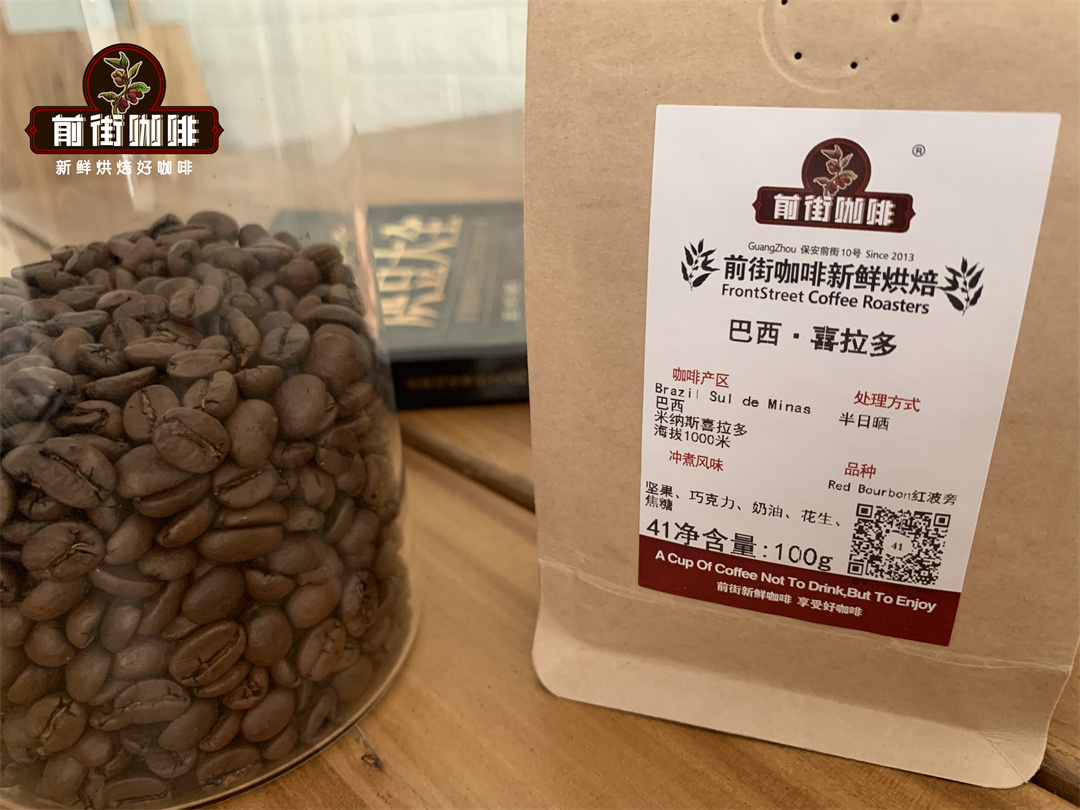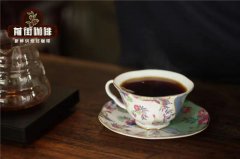Top boutique coffee from all over the world what is the difference between boutique coffee in different countries and regions
The ideal conditions for the growth of coffee trees are all over the world, located in the equatorial zone between 25 degrees north latitude and 30 degrees south latitude, known as the "bean belt". Fussy Arabica coffee grows best in high-altitude fertile soil, while healthier robusta coffee prefers higher temperatures and thrives on lower ground.
From the species of plants, the chemical composition of the soil, the weather, rainfall and sunlight, and even the precise height of coffee growth, everything can affect the taste of the final product. These key variables, together with the way cherries are processed after picking, help to distinguish coffee from countries, growing areas and plantations around the world.
The combination of factors is so complex that even from a single plantation, people will find differences in quality and taste. Coffee is grown in more than 50 countries, including:
North America and the Caribbean
United States-Hawaii
Although coffee farms are all over the Hawaiian islands, Kona coffee from the big island of Hawaii is the best known and has always been in great demand. Here, nature provides the right environment for coffee trees on the slopes of the active Mauna Loa volcano. Young trees are planted in black volcanic soil, so new that farmers often seem to plant seedlings in rocks. The afternoon shade of tropical clouds forms natural crowns on the trees to protect them from the strong sun, and frequent island showers bring the plants just the right Rain Water. Kona Coffee has been carefully processed to create a cup of delicious and full-bodied medium-bodied wine.
Mexico
Small coffee farms in Mexico are more common than large plantations, but Mexico has more than 100000 coffee farmers and is one of the largest coffee producers in the world. Most farms are located in the southern states of Veracruz, Oaxaca and Chiapas. A cup of Mexican coffee usually has a wonderful aroma and strong flavor, usually with obvious sharpness. It is an excellent deep-roasted coffee bean and is often used for mixing. Mexican coffee, named Altura, means it grows at high altitudes.
Puerto Rico
Coffee was brought to Puerto Rico from Martinique in 1736 and by the late 19th century the island had become the world's sixth largest exporter of coffee. However, major hurricanes and competition from other coffee-producing countries forced the island to seek other ways of economic survival. Today, the coffee industry is reviving, using coffee carefully cultivated by high-quality Arabica coffee varieties produced to the highest standards. There are two main growing areas on the Caribbean island: Grand Lares in the south-central region and Yauco Selecto in the southwest. Both regions are known for the balanced taste and acidity of their coffee beans as well as fruity aromas.

Central America
Guatemala
Although it may not be as famous as some of its Central and South American neighbors, Guatemalan coffee has a unique taste quality and is favored by many people for its strong flavor. The three main growing areas-Antigua, Koban and Weitanango-each have amazing rugged landscapes and fertile volcanic soil. Microclimate strongly affects the quality and flavor of "strict hard beans" (growing at 4500 feet / 1370 meters or more above sea level). This medium to full-bodied coffee has a rich and complex flavor, almost spicy or chocolate.
Costa Rica
Costa Rica only produces wet-processed Arabica coffee. A medium-bodied wine with strong acidity is usually described as having a perfect balance. Costa Rican coffee is mainly grown on small farms or fincas. Immediately after harvest, the cherries are taken to the state-of-the-art processing facility beneficios, where wet processing begins. Careful attention to quality processing and careful planting methods has given Costa Rica a reputation for boutique coffee.
South America
Colombia
Colombia is probably the most famous coffee producer in the world, ranking second in annual output. Thousands of small family farms across the country are proud to maintain high standards of excellence. Such care and attention will result in consistent quality coffee, mild coffee, and balanced acidity. Colombia's rugged terrain provides a perfect natural environment for planting, but the terrain makes it difficult to transport harvested coffee beans to production and transportation centers. Even today, this is usually done by mules or jeeps. The highest grade of Columbia Supremo has a delicate, aromatic sweetness, while the Excelso grade is softer and slightly acidic.

Brazil
Brazil is the world's largest coffee producer, and its production range seems endless. Coffee plantations in Brazil usually cover large tracts of land and require hundreds of people to manage and operate them to produce large quantities of coffee. Both Arabica and Robusta are grown, and climate, soil quality and altitude determine which variety grows best in which region. A glass of fine Brazilian wine is clear, sweet, medium-bodied and low in acidity.
East Africa
Ethiopia
The coffee legend tells the story of the first coffee tree found in Ethiopia-it is not difficult to believe that coffee originated in the wild coffee tree forest where it is still the main source of harvest. Coffee from Ethiopia is usually wet-processed and comes from one of the three main growing areas-Sidamo, Harald and Kafa-and is usually named after one of them. In the cup, Ethiopian coffee tends to provide an extraordinary and bold statement: full-bodied, a little down-to-earth, full-bodied.
Kenya
Kenyan coffee is famous and popular in both the United States and Europe. Beans produce strong fruity acidity, combined with a full body and strong aroma. Coffee is grown at the foot of the Kenyan mountains and is usually grown by small farmers. Kenyan producers attach importance to quality, so processing and drying procedures are carefully controlled and monitored. Kenya has its own unique grading system. Kenya's AA is the largest bean in the No. 10 grading system, and AA+ means it is grown on a manor.
West Africa (West Africa
Ivory Coast
Ivory Coast is one of the largest producers of robusta coffee in the world. Robusta coffee has a rich aroma, light body and high acidity. This variety is very suitable for deep roasting, so they are often used to mix espresso.
the arabian peninsula
Yemen
In countries where coffee was first commercially grown, coffee is still grown in an ancient, century-old way. You can almost always find a few coffee trees in the small terraced garden on the family farm. Because of the scarcity of water resources in this arid land, coffee beans grown here tend to be smaller and more irregular in size and shape. Lack of water also means that coffee cherries will be dried after harvest. The result is that Yemeni coffee has a unique taste, deep, rich and different.
In ancient times, when coffee was shipped from the famous Yemeni port of Mocha to all parts of the world, the word mocha became synonymous with Arabian coffee. The Dutch combined Arabica coffee with coffee grown on the island of Java to make the first coffee mixture, which is still well known today-Moka Java.
Asia
Indonesia
Indonesia is one of the largest countries in the world, made up of thousands of islands. Several larger islands-Sumatra, Java and Sulawesi-are famous for their high-quality coffee. In the 17th century, Dutch colonists introduced coffee plants to Indonesia, which soon led the world's production. Today, 1-2 acres of small coffee farms dominate, most of which are dry processed. Indonesian coffee is famous for its rich, full-bodied and mild acidity.
Indonesia is also famous for its high-quality old coffee, which farmers hold for a period of time and want to sell at a higher price. In Indonesia's warm and humid climate, warehouses age coffee gently, giving caffeine a deeper body and lower acidity. This process is unmatched-even with today's technology.
Viet Nam
Coffee was first introduced to Vietnam in the mid-19th century, when French missionaries brought Arabica trees from Bourbon and planted them near Tokyo. Recently, coffee has been reintroduced, and the coffee industry is developing so rapidly that Vietnam is rapidly becoming one of the largest producers in the world. Today, small plantations in the southern half of the country mainly produce robusta coffee. Vietnamese coffee is light acidity, mild-bodied, well-balanced and is often used for blending.
Important Notice :
前街咖啡 FrontStreet Coffee has moved to new addredd:
FrontStreet Coffee Address: 315,Donghua East Road,GuangZhou
Tel:020 38364473
- Prev

Will drinking coffee keep you awake at the best time to drink coffee?
According to the survey, more than 85% of Americans regularly consume caffeine, and coffee is the preferred drink. One possible reason is that more than 40% of Americans don't get enough sleep. No wonder so many people associate the morning with the smell of fresh coffee or a quick trip to Starbucks before work. But according to dietitians and dietitians, if you want to stay alert throughout the afternoon, the morning may not be
- Next

Macchiato VS. Latte VS. Cappuccino? What kind of milk should latte macchiato use?
Latte macchiato adds espresso to steamed milk, and latte adds steamed milk to espresso. A cappuccino uses less hot milk than coffee lattes and more foam. Macchiato also has a Machia or espresso logo on the top of the coffee drink. If the latte is in a glass, it is usually served with napkins so that customers
Related
- What brand of black coffee is the most authentic and delicious? what are the characteristics of the flavor of the authentic Rose Summer Black Coffee?
- Introduction to the principle and characteristics of the correct use of mocha pot A detailed course of mocha pot brewing coffee is described in five steps.
- Which is better, decaf or regular coffee? how is decaf made?
- How much is a bag of four cat coffee?
- How about four Cat Coffee or Nestle Coffee? why is it a cheap scam?
- Which is better, Yunnan four Cats Coffee or Nestle Coffee? How about cat coffee? is it a fake scam? why is it so cheap?
- How about Cat Coffee? what grade is a hoax? which instant coffee tastes better, four Cat Coffee, Nestle Coffee or G7 coffee?
- Process flow chart of coffee making-Starbucks coffee making process what coffee tastes good at Starbucks
- The top ten best coffee beans in the world Rose summer coffee or Tanzanian coffee tastes good
- Yunnan four cat coffee is good to drink?_four cat coffee is a big brand? four cat blue mountain coffee is fake?

